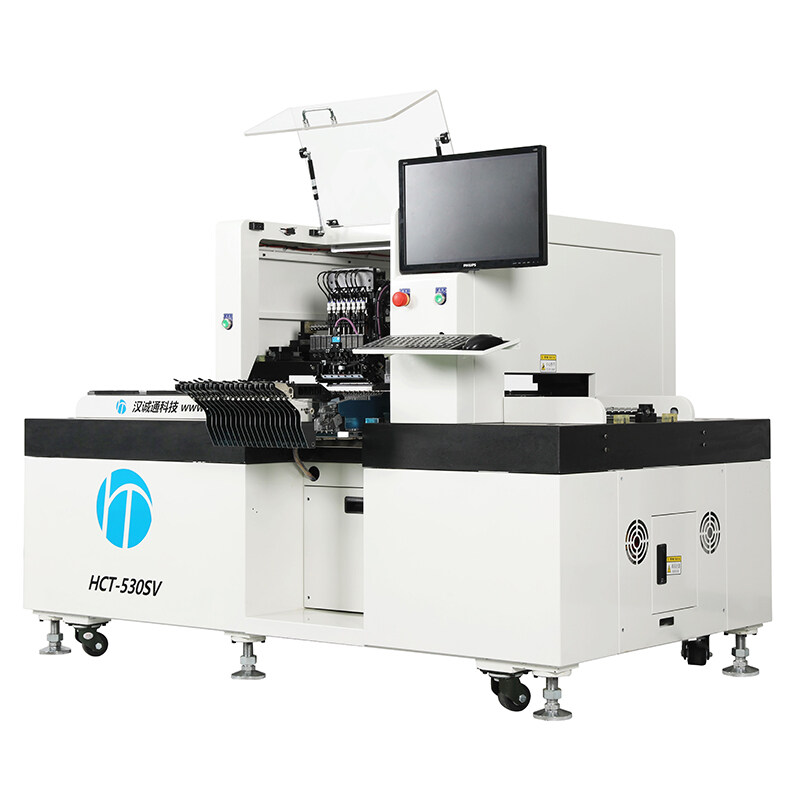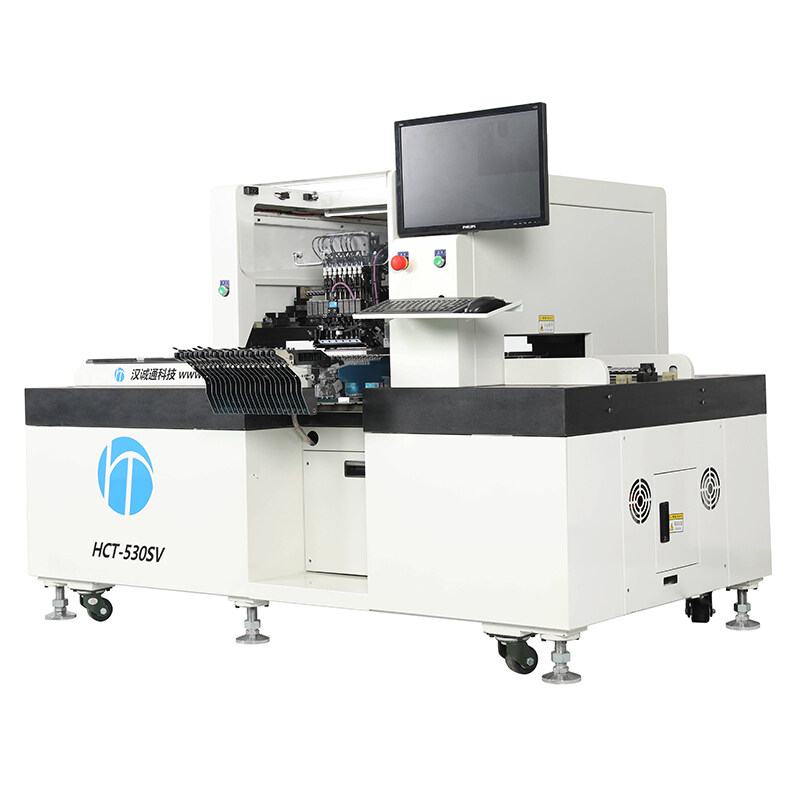Email format error
Email cannot be empty
Email already exists
6-20 characters(letters plus numbers only)
The password is inconsistent
Email format error
Email cannot be empty
Email does not exist
6-20 characters(letters plus numbers only)
The password is inconsistent


The Ultimate Guide to LED SMD PCB Loaders: Everything You Need to Know
In the rapidly advancing world of electronics, the need for efficient and reliable assembly of LED SMD (Surface Mounted Device) PCBs (Printed Circuit Boards) is paramount. Among the essential tools in this domain is the LED SMD PCB loader, a critical piece of equipment that ensures the seamless integration of components into electronic circuits. This comprehensive guide delves into the intricacies of LED SMD PCB loaders, exploring their functions, benefits, and how to choose the right one for your needs.
What is an LED SMD PCB Loader?
An LED SMD PCB loader is a specialized machine used in the electronics manufacturing industry to automate the loading of PCBs into SMT (Surface Mount Technology) assembly lines. These loaders are designed to handle PCBs delicately, ensuring they are positioned accurately for subsequent processing steps such as solder paste application, component placement, and reflow soldering.
Key Functions of an LED SMD PCB Loader
1. Automated Loading: The primary function is to automate the loading of PCBs onto the assembly line. This reduces manual handling, minimizing the risk of damage and increasing production efficiency.
2. Accurate Positioning: These loaders ensure that each PCB is accurately positioned on the conveyor, aligning perfectly with the assembly equipment to ensure precise component placement.
3. Versatility: The SMD PCB loaders can handle various PCB sizes and thicknesses, making them versatile for different manufacturing requirements.
4. Speed and Efficiency: By automating the loading process, these machines significantly increase the speed and efficiency of PCB assembly lines, leading to higher production outputs.
Benefits of Using an LED SMD PCB Loader
Investing in an LED SMD PCB loader offers numerous advantages for electronics manufacturers. Below are some of the key benefits:
Enhanced Productivity
Automating the loading process with the SMD PCB loader allows manufacturers to increase their production rates. The machine’s ability to handle multiple PCBs quickly and accurately reduces bottlenecks and downtime, leading to a more streamlined manufacturing process.
Improved Quality and Consistency
Manual loading can lead to inconsistencies and potential damage to PCBs. The SMD PCB loader ensures each board is handled with care and precision, reducing the likelihood of defects and improving overall product quality.
Cost Savings
While the initial investment in the SMD PCB loader may seem significant, the long-term cost savings are substantial. Reduced labor costs, lower defect rates, and higher production efficiency contribute to a faster return on investment.
Safety
Automating PCB loading enhances workplace safety by reducing the need for manual handling. This minimizes the risk of injuries associated with repetitive tasks and the handling of delicate electronic components.
Types of LED SMD PCB Loaders
There are several types available, each designed to meet specific needs in the electronics manufacturing process. Understanding the differences between these types can help you choose the right loader for your application.
Single Magazine PCB Loaders
Single magazine PCB loaders are designed to handle one magazine of PCBs at a time. They are ideal for small to medium-sized production runs and offer a straightforward solution for automating the loading process.
Dual Magazine PCB Loaders
Dual magazine PCB loaders can handle two magazines simultaneously, allowing for higher throughput and greater efficiency. These loaders are suitable for medium to large production runs and are often used in high-volume manufacturing environments.
Customized PCB Loaders
For manufacturers with unique requirements, customized PCB loaders can be designed to accommodate specific PCB sizes, shapes, and handling needs. These bespoke solutions ensure optimal performance and integration with existing assembly lines.
Choosing the Right LED SMD PCB Loader
Selecting the right LED SMD PCB loader for your manufacturing needs requires careful consideration of several factors. Here are some key aspects to keep in mind:
Production Volume
Consider the volume of PCBs your assembly line processes daily. High-volume production environments may benefit from dual magazine loaders or customized solutions that can handle large quantities efficiently.
PCB Specifications
Take into account the size, thickness, and shape of the PCBs you are working with. Ensure the loader you choose can accommodate these specifications without compromising on performance or accuracy.
Integration with Existing Equipment
Ensure that the SMD PCB loader is compatible with your existing SMT assembly line equipment. Seamless integration is crucial for maintaining a smooth and efficient production process.
Budget
While cost should not be the sole determining factor, it is important to choose a loader that fits within your budget while still meeting your production needs. Consider the long-term cost savings and return on investment when evaluating different options.
Installation and Maintenance of LED SMD PCB Loaders
Proper installation and regular maintenance of your SMD PCB loader are essential for ensuring optimal performance and longevity. Here are some tips for installation and maintenance:
Installation Tips
1. Follow Manufacturer Guidelines: Always follow the manufacturer’s instructions for installation. This ensures that the loader is set up correctly and operates as intended.
2. Professional Installation: Consider hiring a professional technician to install the loader. This can help avoid common installation errors and ensure proper integration with your assembly line.
3. Test Before Use: After installation, perform thorough testing to ensure the loader is functioning correctly. This includes checking for proper alignment, smooth operation, and compatibility with your PCBs.
Maintenance Tips
1. Regular Cleaning: Keep the loader clean and free of dust and debris. Regular cleaning prevents buildup that can interfere with the machine’s operation.
2. Routine Inspections: Conduct regular inspections to identify any signs of wear or damage. Addressing issues early can prevent more significant problems and costly repairs.
3. Lubrication: Ensure that moving parts are properly lubricated to maintain smooth operation. Follow the manufacturer’s recommendations for the type and frequency of lubrication.
4. Software Updates: Keep the loader’s software up to date. Software updates can improve performance, add new features, and fix bugs.
The Future of LED SMD PCB Loaders
As technology continues to evolve, the capabilities and functionalities are expected to advance as well. Here are some trends and developments to watch for in the coming years:
Increased Automation and AI Integration
Future LED SMD PCB loaders may incorporate more advanced automation features, including artificial intelligence (AI) for improved decision-making and efficiency. AI can enhance the loader’s ability to adapt to different PCB types and assembly conditions in real-time.
Enhanced Connectivity
With the rise of Industry 4.0, LED SMD PCB loaders are likely to feature enhanced connectivity options. This includes integration with the Internet of Things (IoT) for real-time monitoring, diagnostics, and predictive maintenance.
Eco-Friendly Designs
Sustainability is becoming increasingly important in manufacturing. Future loaders may incorporate eco-friendly designs and materials, reducing their environmental impact while maintaining high performance.
Compact and Flexible Solutions
As electronic devices become smaller and more complex, the need for compact and flexible PCB loaders will grow. Manufacturers will demand loaders that can handle intricate PCBs with precision and adaptability.
Conclusion
The LED SMD PCB loader is an indispensable tool in modern electronics manufacturing, offering numerous benefits such as enhanced productivity, improved quality, and cost savings. By understanding the different types of loaders available and considering key factors such as production volume, PCB specifications, and budget, manufacturers can choose the right loader for their needs.
Proper installation and maintenance are crucial for ensuring the longevity and optimal performance of the loader. Looking ahead, advancements in automation, AI, connectivity, and eco-friendly designs promise to further enhance the capabilities of LED SMD PCB loaders, making them even more integral to the future of electronics manufacturing.

